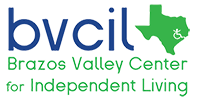During the month of February, BVCIL will acknowledge Low Vision Awareness Month with interactive activities, an awareness field trip, and lots of informative web posts showcasing how people with low vision maintain their independence. Prevent Blindness America initiated Low Vision Awareness Month to call attention to Age-related Macular Degeneration (AMD) which, according to PreventBlindness.org, is the number one cause of vision loss in people over 65.
Vision is measured in terms of acuity, which means accuracy and sharpness. Acuity is expressed as a fraction, with the top number, which is always 20, representing what a person with ideal vision can see clearly and accurately from a distance of 20 feet. So, a person with perfect vision sees 20/20, has 100% of the visual acuity humans typically have, and sees clearly and accurately what he or she should see at that distance.
A person has moderate low vision if her or his visual acuity is between 20/70 and 20/200 in the best corrected eye. Best correction means that even with glasses, medicine, assistive technology, or even surgery, the person’s vision cannot be corrected to better than 20/70. With a best corrected acuity of 20/200 or below (only 10% of ideal vision), or a visual field of less than 20 degrees, a person has severe low vision and is considered “legally blind,” or eligible for disability benefits because of the vision loss. A more generalized definition of low vision is vision loss that interferes with a person’s ability to perform Activities of Daily Living (ADLs).

But just because low vision may make ADLs more complicated does not mean that people who have low vision can’t live independently. Quite the contrary! People who have low vision can choose from a broad spectrum of assistive devices and adaptive techniques to enhance their independence. Some people with low vision choose a long white cane or dog guide to help with mobility. While some with remaining vision do use Braille, such as to access computers, others use electronic high-powered magnification devices to make reading easier. Kitchen aids such as large print cooking timers and battery-powered liquid level indicators enable independent meal preparation.

During Low Vision Awareness Month, we will feature in our office an interactive display about low vision and how people who have it sustain independence. Our Visually Impaired Persons (VIP) peer group will have a lunch outing to promote awareness. Please also follow our web site and our Facebook page throughout February to learn more about life with low vision.





